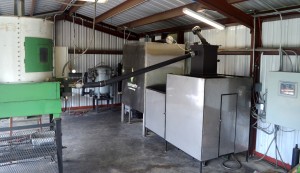The Renewable Energy “New Kid” Gasification Is Actually 400 Years Old
For most people, the term gasification is not necessarily what comes to mind when renewable energy is mentioned. However, it is quickly becoming one of the most important players in the renewable energy game and gaining momentum worldwide. The age of the gasification technology will surprise most of you, but first, a quick explanation of the gasification concept.

(sourced from http://www.nndb.com/) Jean Baptista van Helmont took the first step toward gasification.
Gasification is the process of breaking down carbon-based materials into a high-energy gas by applying extreme temperatures in an oxygen-starved environment. The gasification process significantly reduces harmful emissions compared to either incineration or landfills. The resulting product is Syngas – a flexible, local fuel source that is significantly cleaner than fossil fuels.
The process of gasification has been in existence for over 400 years! In 1609, Jan Baptista Van Helmont, a Belgian chemist and physician, discovered that gas could be produced from heating wood or coal. Following this discovery, several others aided in developing and refining the gasification process. Advances continued until it became widely used in the 1800’s. Coal and peat were originally burned to produce gas for lighting towns and cooking. However, the use of natural gas pushed aside the gasification technology until the World Wars broke out. With the shortage of natural resources such as petroleum, countries like Germany were forced to pick up old energy production methods. Various European countries developed wood gas generators that powered motor vehicles all over Europe. It is estimated that by 1945 over 9 million vehicles were powered by wood gas!
After the wars, the technology slipped away without the immediate need the wars had created since fossil fuels were once again readily available. Throughout the 70’s and 80’s, countries that faced fossil fuel crises continued exploring and advancing the concept. South Africa was a main contributor during these decades due to a Middle East oil crisis. Gasification reappeared in the US during the 70’s natural gas shortage. However, it was not until the 90’s, with the volatility in the Middle East, that the concept of gasification experienced a renaissance. Since then, it has taken hold world wide as one of the main pieces of the sustainable puzzle offering gasification systems from 20 kW to 50 MW. With visionaries such as Waste to Energy’s own CEO, Richard Woods, gasification is quickly finding its place in the US plan of a renewable, sustainable future.
*Information sourced from http://www.netl.doe.gov





